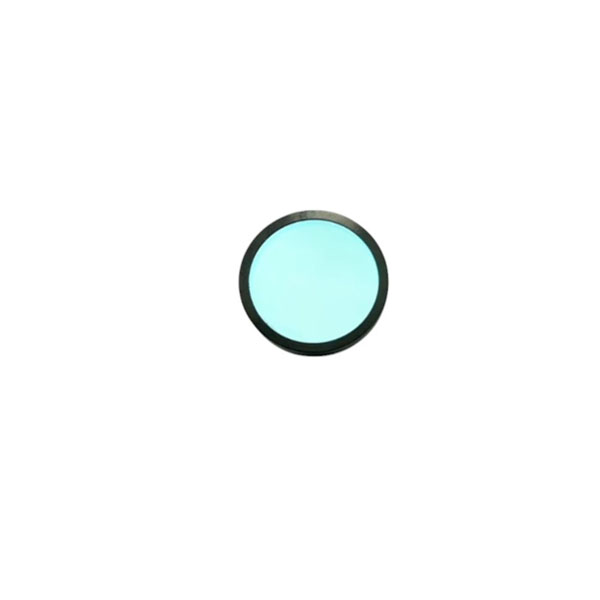

508/20nm Narrow Band Filter
508/20nm Narrow Band Filter is designed to transmit light centered at 508nm and FWHM 20nm. Coligh manufactures optical filter from ultra narrow to wide band
m. Coligh manufactures hard coated interference filter.
- 508nm center wavelength
- 15nm FWHM
- High Transmission > 90%
- Deep blocking depth OD>=6
Products Categories
Get A Free Quote
Dielectric Multilayer 508/20nm Optical Interference Filter Description
508/20nm Narrow Band Filter Coligh manufactures is an optical filter specially designed for high-precision optical systems
- This filter has a central wavelength of 508+/-1nm, a half-bandwidth of 20+/-1nm, and a transmittance greater than or equal to 90% within the passband range, ensuring maximum signal intensity and improving detection sensitivity.
- The cutoff depth outside the passband is OD>=6 within the range of 350-1000nm, effectively blocking stray light interference and ensuring signal-to-noise ratio.
- We use hard coating technology and ion-assisted deposition technology to coat the film, which is wear-resistant and suitable for harsh environments.
- We use fused quartz, a low-autofluorescence material, as a substrate to reduce autofluorescence background, which is particularly suitable for high-sensitivity fluorescence detection.
508/20nm Narrow Band Filter Technical Datasheet
| Parameter | Specification |
| Center Wavelength (CWL) | 508 nm ± 1 nm |
| Full Width at Half Maximum (FWHM) | 20nm± 1 nm |
| Peak Transmission | 90% |
| Blocking Range | 350-1000nm |
| Optical Density (OD) | OD ≥ 6 outside passband |
| Angle of Incidence (AOI) | 0° +/-5° |
| Surface Quality | 60/40 scratch-dig (per MIL-PRF-13830B) |
| Substrate Material | B270 or Fused Silica JGS1 |
| Coating Type | Hard-Coated Interference Filter/ IAD Assisted Coating |
| Thickness | 1mm (typical) |
| Filter Dimensions | Custom sizes available (e.g., Ø12.5 mm, 60×60 mm) |
| Clear Aperture | >90% of physical size |
| Operating Temperature | -40°C to +85°C |
508/20nm Narrow Band Filter Applications
- Fluorescence microscope imaging
The excitation/emission spectra of fluorescent markers FITC and fluorescent proteins are often in the range of 500-520nm, and the target signal needs to be accurately separated to avoid background light interference. The 508/20nm narrowband filter can be placed in the microscope imaging light path, and cooperate with the excitation light source and detector to filter non-508nm stray light. In this way, only 508±10nm fluorescence signals can be allowed to pass, and other bands can be suppressed to obtain high-contrast cell/tissue images, supporting accurate pathological diagnosis or gene expression analysis. - Flow cytometry
The flow cytometer needs to detect multi-color fluorescent markers at the same time, and the 508nm channel needs to strictly match the emission spectrum of the marker. The 508/20nm bandpass filter can be integrated in front of the photomultiplier tube and combined with a dichroic mirror to separate signals from different fluorescence channels. - Environmental water quality monitoring
The characteristic absorption peak of chlorophyll a in water is at 440nm, and the fluorescence emission peak is at 680nm, but some near-infrared interference needs to be pre-filtered through a 508nm filter. The 508/20nm optical filter can be embedded in the optical probe of a portable water quality analyzer, and can be used with a blue light excitation light source to filter out ambient light interference. This eliminates stray light reflected by suspended particles in the water and improves the sensitivity of chlorophyll a concentration detection. - PCR equipment
Real-time fluorescence quantitative PCR requires monitoring the signal intensity changes of the 508nm fluorescent probe during DNA amplification. This filter can be integrated into the optical detection module of the PCR instrument and used in combination with the excitation light source and photodiode. This can accurately capture the emission light of the fluorescent probe and eliminate interference from the reaction tube wall or sample autofluorescence.



